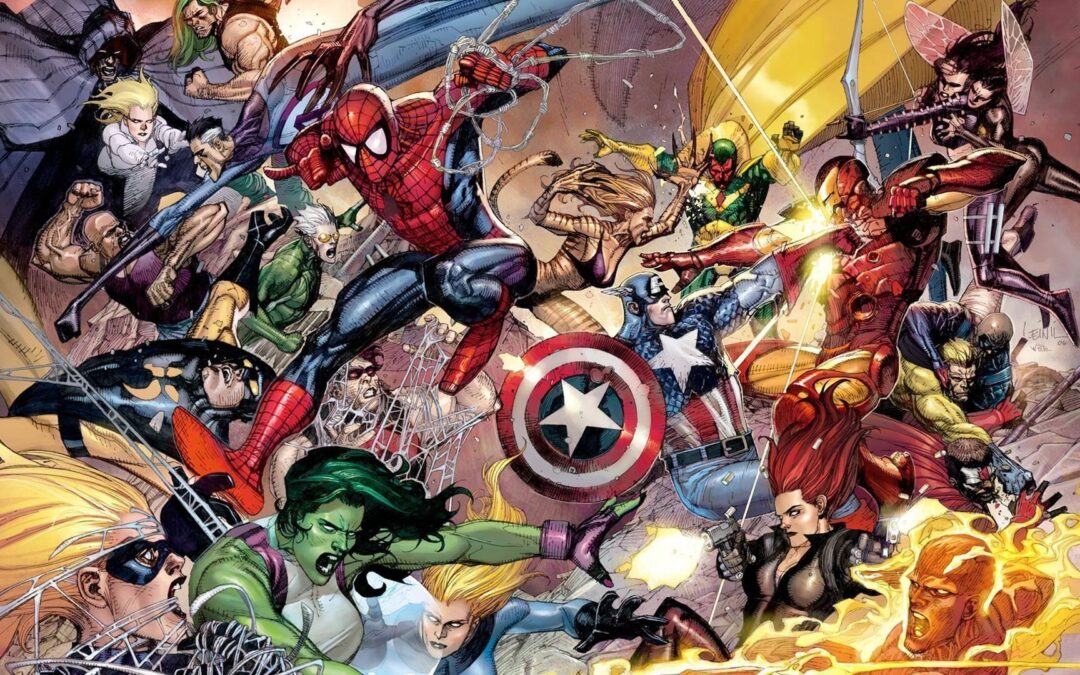At the end of the 19th century, comic strips made their debut in print media. When it was first published in 1895, this book was the first in the United States to aggregate popular comics. The first volume of The Adventures of Tin Tin Tin was published in 1928; the Tin Tin stories made their initial appearance in Europe. The narrative was included in a comic that took up two pages in the youth section of a Belgian newspaper.
At the same time, British comic books started to feature heroes like The Dandy and Beano. In the 1940s, Archie Comics and the Peanuts comic strip started coming out. After the end of World War II, manga began to enjoy widespread popularity in Japan. In 1952, publishers distributed the very first issue of Astro Boy.
What was the first comic book?
Funnies on Parade came out in 1933. Instead of new content, it was made up of newspaper cartoons that had already been published. Mutt and Jeff, Joe Palooka, and Skippy were some of the most popular. It led to more newspaper comic strips being written and sold. But since there was a lot of demand for comics, aspiring cartoonists out of work during the Great Depression soon started making their own low-cost comics.
When the industry was just starting, comic book sales took off quickly. When Superman first appeared in comic books in 1938, he became the most famous hero in the world. He led to the creation of many other characters with superpowers. New Captain America and Batman books, as well as Green Lantern and Wonder Woman comics, are in the works.
What were the popular ages of comics?

Platinum age:
The Platinum Age of comics lasted from 1897 to 1938. A number of comic strips first debuted in newspapers around this time, including The Yellow Kid, Mutt & Jeff, and The Katzenjammer Kids. The Golden Age began with Action #1. Because of its age, this comic is one of the most elusive. The first comic books as we know them today were printed and circulated during this historical period.
Regarding the history of comics, the Platinum Age had a profound effect. As a result, it was the first comic book to feature original plotlines and characters with superpowers. There has been a shift from the Platinum Era to the Golden Era.
Golden age:
The Golden Age of Comics is the ancestor of modern comics. Action Comics #1 was the first comic book to show a superhero in a costume in 1938. After the appearance of Superman in comic books, their readership exploded. Captain Marvel and the first two iterations of Captain America were also conceived during this period.
Most people assume that the Golden Age of Comic Books occurred between 1938 and the late 1940s or early 1950s. Overall, it is considered to be when superhero movies were replaced by horror and westerns. Young readers have traditionally considered animal and teen comedies the most popular genres. The number of novels based on television shows has risen in tandem with the medium’s popularity.
As a result, publishers have cut back on the number of pages included in comic books to keep prices stable. If you’re only printing 32 pages, you’ll now pay a penny less for each page. In order to keep prices low, newsstands ceased selling comics since they could make more money by selling more expensive publications. Post-war comics have shifted away from superheroes in favor of more adult topics, such as risqué “good girl” publications, war, true crime, and graphic horror.
Silver age:
The heyday of comic book popularity occurred during the Silver Age. During the heyday of superhero stories, painters had a lot of success. Most people agree that it started in the 1950s and lasted until the 1970s. The Silver Age of comics included gorillas who could speak, canines with unique talents, and covers drawn before the story was complete. Due to its indifference to the present, it was doomed to failure.
When comics were produced for adults instead of children, numerous revolutionary African-American superheroes appeared, like Black Panther. Traditional Golden Age heroes with lantern-jawed faces employed logic and inventiveness to solve the story. In contrast, character-based heroes had to deal with both supervillains and their inner demons in the character-based approach.
Jack Kirby’s departure from Marvel to join DC is often seen as the beginning and end of the Silver Age. Man’s Steve Ditko, one of Spider-co-creators, Man’s had already accepted Marvel Comics’ new direction.
Bronze age:
Multiple sources say the Bronze age started in 1984 and ended in the 1980s. Comic book art and content have evolved over time. Painters such as Roy Thomas, Frank Miller, and Chris Claremont were filling in the hole left behind by the Golden Age’s older group of artists. Compared to the Silver Age, the comics of this era had a more cinematic feel. It wasn’t long before famous cultural archetypes like Scary Black Men with afros and Jive Turkey appeared as non-white superheroes in comic books.
Other examples are Asian martial artists who read Confucian homilies. In the early days of the genre, authors who were able to break free of these stereotypes gave us our first authentic glimpses of what was possible. It’s a method that has been used to produce characters like Storm, Cyborg from the Teen Titans, and John Stewart from the Green Lantern comics.
Throughout the Bronze Age, many regulations that had been in effect during the Silver Age remained in place. Superhero comic books and films laid the groundwork for the entire business. Darker themes and stories on real-world issues like drug abuse, alcoholism, and environmental damage emerged during this time period. In the Modern Age of Comics, this foreshadows things to come.
Modern age:
The duration of the Modern Era has considerably surpassed that of any other time period. This trend began in the middle of the 1980s and has remained prevalent up until the present day. Many people who consider themselves experts in literature look down on works produced in the 1990s and the early 2000s.
Throughout this historical period, the characters in comic books progress toward a more mature and complex aesthetic. Because of the surge in popularity of authors, the business as a whole underwent a significant transformation. The marketing activities of large publishing firms increased in parallel with the growth in the popularity of independent comic books.
Even while this period may be responsible for making comics what they are now, it was nonetheless an important turning point in the medium’s evolution. The Dark Knight Returns by Frank Miller and Watchmen by Alan Moore were both published in 1986 and are considered seminal works in the graphic novel genre. Since then, comic books have been seen as something other than a medium through which youngsters may only pass the time as a source of entertainment.
Verdict:
There has been a thriving industry for some time now in which people bet on the future’s increased worth of comic books. Because of this, there has been a significant influence on today’s society. It is impossible to ignore social media’s significant influence on our lives.
Publishers, artists, and writers are all generating significantly more money as a direct result of it. There is no way to know what is ahead at this point because there is no way to predict the future. Something “game-changing” is required if we are to progress beyond the “Modern Age” and into the next era. You can find various books at our online comic book store.

